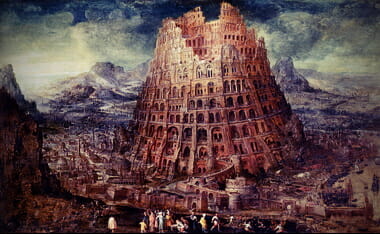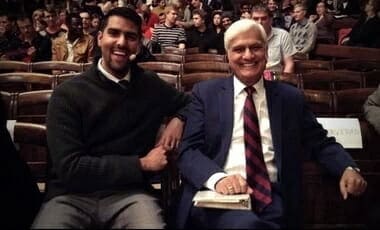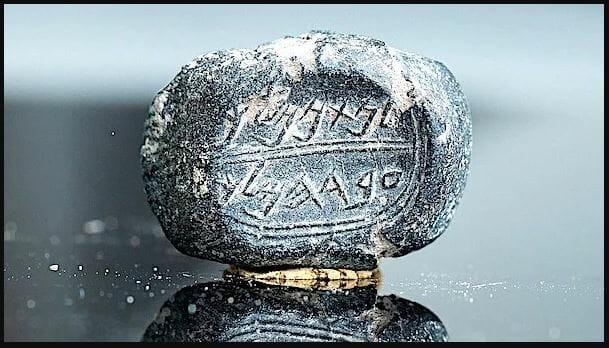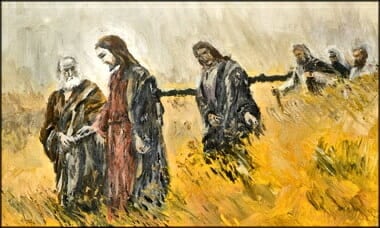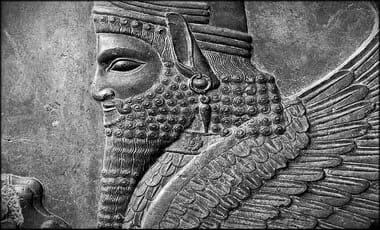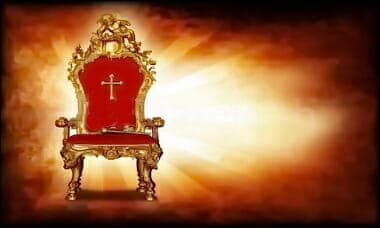(Originally Posted July of 2010)
CRI’s EQUIP post has a short list to make the point:
A Common Flood Story. Not just the Hebrews (Gen. 6–8), but Mesopotamians, Egyptians, and Greeks all report a flood in primordial times. A Sumerian king list from c. 2100 BC divides itself into two categories: those kings who ruled before a great flood and those who ruled after it. One of the earliest examples of Sumero-Akkadian-Babylonian literature, the Gilgamesh Epic, describes a great flood sent as punishment by the gods, with humanity saved only when the pious Utnapishtim (AKA, “the Mesopotamian Noah”) builds a ship and saves the animal world thereon. A later Greek counterpart, the story of Deucalion and Phyrra, tells of a couple who survived a great flood sent by an angry Zeus. Taking refuge atop Mount Parnassus (AKA, “the Greek Ararat”), they supposedly repopulated the earth by heaving stones behind them that sprang into human beings.
The Code of Hammurabi. This seven-foot black diorite stele, discovered at Susa and presently located in the Louvre museum, contains 282 engraved laws of Babylonian King Hammurabi (fl. 1750 BC). The common basis for this law code is the lex talionis (“the law of the tooth”), showing that there was a common Semitic law of retribution in the ancient Near East, which is clearly reflected in the Pentateuch. Exodus 21:23–25, for example, reads: “But if there is serious injury, you are to take life for life, eye for eye, tooth for tooth, hand for hand, foot for foot…” (niv).
The Nuzi Tablets. The some 20,000 cuneiform clay tablets discovered at the ruins of Nuzi, east of the Tigris River and datable to c. 1500 BC, reveal institutions, practices, and customs remarkably congruent to those found in Genesis. These tablets include treaties, marriage arrangements, rules regarding inheritance, adoption, and the like.
The Existence of Hittites. Genesis 23 reports that Abraham buried Sarah in the Cave of Machpelah, which he purchased from Ephron the Hittite. Second Samuel 11 tells of David’s adultery with Bathsheba, the wife of Uriah the Hittite. A century ago the Hittites were unknown outside of the Old Testament, and critics claimed that they were a figment of biblical imagination. In 1906, however, archaeologists digging east of Ankara, Turkey, discovered the ruins of Hattusas, the ancient Hittite capital at what is today called Boghazkoy, as well as its vast collection of Hittite historical records, which showed an empire flourishing in the mid-second millennium BC. This critical challenge, among many others, was immediately proved worthless — a pattern that would often be repeated in the decades to come.
The Merneptah Stele. A seven-foot slab engraved with hieroglyphics, also called the Israel Stele, boasts of the Egyptian pharaoh’s conquest of Libyans and peoples in Palestine, including the Israelites: “Israel — his seed is not.” This is the earliest reference to Israel in nonbiblical sources and demonstrates that, as of c. 1230 BC, the Hebrews were already living in the Promised Land.
Biblical Cities Attested Archaeologically. In addition to Jericho, places such as Haran, Hazor, Dan, Megiddo, Shechem, Samaria, Shiloh, Gezer, Gibeah, Beth Shemesh, Beth Shean, Beersheba, Lachish, and many other urban sites have been excavated, quite apart from such larger and obvious locations as Jerusalem or Babylon. Such geographical markers are extremely significant in demonstrating that fact, not fantasy, is intended in the Old Testament historical narratives; otherwise, the specificity regarding these urban sites would have been replaced by “Once upon a time” narratives with only hazy geographical parameters, if any.
Israel’s enemies in the Hebrew Bible likewise are not contrived but solidly historical. Among the most dangerous of these were the Philistines, the people after whom Palestine itself would be named. Their earliest depiction is on the Temple of Rameses III at Thebes, c. 1150 BC, as “peoples of the sea” who invaded the Delta area and later the coastal plain of Canaan. The Pentapolis (five cities) they established — namely Ashkelon, Ashdod, Gaza, Gath, and Ekron — have all been excavated, at least in part, and some remain cities to this day. Such precise urban evidence measures favorably when compared with the geographical sites claimed in the holy books of other religious systems, which often have no basis whatever in reality.10
Shishak’s Invasion of Judah. First Kings 14 and 2 Chronicles 12 tell of Pharaoh Shishak’s conquest of Judah in the fifth year of the reign of King Rehoboam, the brainless son of Solomon, and how Solomon’s temple in Jerusalem was robbed of its treasures on that occasion. This victory is also commemorated in hieroglyphic wall carvings on the Temple of Amon at Thebes.
The Moabite Stone. Second Kings 3 reports that Mesha, the king of Moab, rebelled against the king of Israel following the death of Ahab. A three-foot stone slab, also called the Mesha Stele, confirms the revolt by claiming triumph over Ahab’s family, c. 850 BC, and that Israel had “perished forever.”
Obelisk of Shalmaneser III. In 2 Kings 9–10, Jehu is mentioned as King of Israel (841–814 BC). That the growing power of Assyria was already encroaching on the northern kings prior to their ultimate conquest in 722 BC is demonstrated by a six-and-a-half-foot black obelisk discovered in the ruins of the palace at Nimrud in 1846. On it, Jehu is shown kneeling before Shalmaneser III and offering tribute to the Assyrian king, the only relief we have to date of a Hebrew monarch.
Burial Plaque of King Uzziah. Down in Judah, King Uzziah ruled from 792 to 740 BC, a contemporary of Amos, Hosea, and Isaiah. Like Solomon, he began well and ended badly. In 2 Chronicles 26 his sin is recorded, which resulted in his being struck with leprosy later in life. When Uzziah died, he was interred in a “field of burial that belonged to the kings.” His stone burial plaque has been discovered on the Mount of Olives, and it reads: “Here, the bones of Uzziah, King of Judah, were brought. Do not open.”
Hezekiah’s Siloam Tunnel Inscription. King Hezekiah of Judah ruled from 721 to 686 BC. Fearing a siege by the Assyrian king, Sennacherib, Hezekiah preserved Jerusalem’s water supply by cutting a tunnel through 1,750 feet of solid rock from the Gihon Spring to the Pool of Siloam inside the city walls (2 Kings 20; 2 Chron. 32). At the Siloam end of the tunnel, an inscription, presently in the archaeological museum at Istanbul, Turkey, celebrates this remarkable accomplishment. The tunnel is probably the only biblical site that has not changed its appearance in 2,700 years.
The Sennacherib Prism. After having conquered the 10 northern tribes of Israel, the Assyrians moved southward to do the same to Judah (2 Kings 18–19). The prophet Isaiah, however, told Hezekiah that God would protect Judah and Jerusalem against Sennacherib (2 Chron. 32; Isa. 36–37). Assyrian records virtually confirm this. The cuneiform on a hexagonal, 15-inch baked clay prism found at the Assyrian capital of Nineveh describes Sennacherib’s invasion of Judah in 701 BC in which it claims that the Assyrian king shut Hezekiah inside Jerusalem “like a caged bird.” Like the biblical record, however, it does not state that he conquered Jerusalem, which the prism certainly would have done had this been the case. The Assyrians, in fact, bypassed Jerusalem on their way to Egypt, and the city would not fall until the time of Nebuchadnezzar and the Neo-Babylonians in 586 BC. Sennacherib himself returned to Nineveh where his own sons murdered him.
The Cylinder of Cyrus the Great. Second Chronicles 36:23 and Ezra 1 report that Cyrus the Great of Persia, after conquering Babylon, permitted Jews in the Babylonian Captivity to return to their homeland. Isaiah had even prophesied this (Isa. 44:28). This tolerant policy of the founder of the Persian Empire is borne out by the discovery of a nine-inch clay cylinder found at Babylon from the time of its conquest, 539 BC, which reports Cyrus’s victory and his subsequent policy of permitting Babylonian captives to return to their homes and even rebuild their temples.
So it goes. This list of correlations between Old Testament texts and the hard evidence of Near Eastern archaeology could easily be tripled in length….
Bible Reliability 3: Archeological Discoveries
Here are some older posts/conversations:
This story has an important facet for us apologists, but first, let us enjoy this finds belated attribution:
Jerusalem Post: Long time archaeological riddle solved
The riddle of the identity of a 3,200-year-old round bronze tablet with a carved face of a woman has apparently been solved, 13 years after it was discovered at the El-ahwat excavation site between Katzir-Harish and Nahal Iron (Wadi Ara) by scientist Oren Cohen of the University of Haifa.
The small, broken-off piece of metal is probably part of a linchpin that held the wheel to a war chariot sent to battle by the Canaanite general Sisera against the Israelites, says Prof. Adam Zertal, who for 33 years has led weekly walks with university colleagues and volunteers over “every square meter” of Samaria and the Jordan Rift to search for archeological evidence from biblical times.
The round, bronze tablet, about 2 centimeters in diameter and 5 millimeters thick, features a carved face of a woman wearing a cap and earrings shaped as chariot wheels. It was found in a structure identified as the “Governor’s House.”
Cohen was unable to find its parallel in any other archeological discoveries. When carrying out a study on the walls of the Temple of Rameses III in Egypt of ancient reliefs depicting chariot battles, Cohen identified a unique decoration – the bronze linchpins fastening the chariot wheels were decorated with the faces of captives, foreigners and enemies of Egypt. He also noticed that these decorations characterized those chariots that were used by royalty and other dignitaries. Cohen found that the linchpin with the woman’s face found near Katzir was almost identical to that found in the Egyptian temple.
The identification as a linchpin, Zertal said, reinforces the claim that a high-ranking Egyptian or local ruler was based at this location and is likely to support the theory that the site is Haroshet Hagoyim – the Canaanite base of Sisera, as mentioned in the fourth and fifth chapter of the Book of Judges, the 70-year archeologist told The Jerusalem Post on Thursday.
The Egyptians and Canaanites both created linchpins for chariots with the carved faces of their enemies; the place on the wheels were considered “very undignified,” said Zertal, like the Jews putting Haman’s name on the soles of their shoes for beating against the floor while the Book of Esther is read aloud…
…Sisera was the captain of the army of Yavin, king of Canaan. According to Judges 4:3, Sisera led an army of 900 iron chariots and oppressed the Israelites for two decades. Deborah the Prophetess, then leader of the Israelite tribes, persuaded Barak to face Sisera in battle. He led a force of 10,000 and destroyed the army of Sisera, whose origin was completely unknown. The battle, the Bible says, led to a 40-year peace…
…The Haifa archeologist was raised at a Hashomer Hatzair kibbutz and severely wounded in the Yom Kippur War. “I spent a year at Hadassah Hospital in Jerusalem, and I became interested in archeology. Although I had argued that the Bible was full of myths, I decided after my recovery to travel the land by foot to look for archeological evidence.”
Zertal, who took the walks often using crutches from his decades-old injury, added: “I am a man of science and have to investigate whether what is described in the Bible suits the geography. Nobody thought there was an altar on Mount Ebal, but the evidence was found. It is not a legend. When you do archeological research as you should, you see a lot [of the biblical stories] is reality.”
…(read more)…
This last part is key, let me explain. Archaeology has served as one of the great evidences for the skeptical person to have many of their doubts answered. I wish to display the above in some past debates I have had. Since many of these past debates are about a decade old or older, referencing isn’t up to my current par… but you will get the main point of the discussions at hand. Also keep in mind these are portions of larger responses… so you may feel like you just stepped into the middle of a conversation – you would be right.
The first presentation is a discussion between myself and Rocket Girl, the second between myself a Nightmyre.
Discussion with Rocket Girl
Rocket Girl made reference to where the evidence for Noah’s Flood is, Sodom and Gomorrah (here is an article, see video as well), and the like. I respond:
People use to say the same about David, Saul, Solomon. The Bible makes mention of the Hittites 47 times… people use to say “where is the evidence for these peoples? It must be a myth!” As with David, Saul, and the many others once thought to be mythical, all have been found. In fact, Turkey has a museum dedicated solely to the Hittite peoples.
Rocket Girl mentioned wanting proof for Noah’s Ark. This proof would also require evidence for a worldwide flood, and keeping this short and sweet, over 75% of the earth’s crust is sediment – that is, the matter that settles to the bottom of a liquid; lees; dregs (Webster). That’s a lot of proof of water at some point in earth’s history. Over 220 cultures (from the Australian Aboriginal to the South American Indian to the Russians and Chinese) separated by time and water all have stories of the first man being red (Hebrew for Adam means red clay), a worldwide flood, a bird being released after the craft landed, and an animal sacrifice, etc.
It seems funny that one would ask for evidence of Sodom and Gomorrah, as this town has been found. There are writings from antiquity (other than Biblical) about it as well as the excavation of Bab edh-Dhra. The writings of Nebuchadnezzar speak of the world having one language and all living around a great tower that he tried to rebuild (that Saddam Hussein is rebuilding as well). Man-made items found in most geological layers (even the pre-Cambrian). Dinosaur boned found by riverbeds so fresh at first they thought to be Bison bones. T-Rex blood found in an un-mineralized bone. As well as dino bones found with blood cells and proteins. Ancient stone work of Dinosaurs, Etc., Etc.
Sir Frederic Kenyon, former director and principle librarian of the British Museum, was possibly the most respected New Testament textual scholar in our century. Shortly before his death he commented on the significance of the fact that the evidence is overwhelming that the Gospels were composed shortly after the events of Christ’s life and that the early church widely distributed them within its congregations within a relatively short period of time is significant. Kenyon wrote:
“the interval, then, between the dates of the original composition and the earliest extant evidence becomes so small as to be in fact negligible, and the last foundation for any doubt that the Scriptures have come down to us substantially as they were written has now been removed. Both the authenticity and the general integrity of the books of the New Testament may be regarded as finally established.”
After a lifetime of in-depth review of the New Testament manuscripts, Kenyon concluded that the present text in our Bible is absolutely reliable. He wrote: “It is reassuring at the end to find that the general result of all these discoveries and all this study is to strengthen the proof of the authenticity of the Scriptures, and our conviction that we have in our hands, in substantial integrity, the veritable Word of God.”
Dr William F. Albright was unquestionably one of the world’s most brilliant Biblical archaeologists. In 1955 he wrote: “We can already say emphatically that there is no longer any solid bases for dating any book of the New Testament after circa A.D.80.” He was a skeptic! However, over the next several decades of discoveries were convincing enough to make him pen this on the New Testament being written: “probably sometime between circa A.D.50 and 75.” Albright concluded, from the evidence, that the writing of the New Testament within a few years of the events of Christ’s life and the writing was “too slight to permit any appreciable corruption of the essential center and even of the specific wording of the sayings of Christ.” In other words, Professor Albright, one of the greatest minds in the field of archaeology and ancient texts, concluded (via evidence) that the New Testament records the truth about Jesus Christ and His statements.
Dr. John A.T. Robinson was a distinguished lecturer at Trinity College, Cambridge and developed a reputation as a great scholar. Naturally, he accepted the academic consensus universally held since 1900, that denied the disciples and Paul wrote the New Testament and concluded that it was written up to a hundred years after Christ. However, an article in Time magazine, March 21, 1977, reported that Robinson decided to personally investigate for himself the arguments behind this scholarly “consensus” against the New Testament’s reliability because he realized that very little original research had been completed in this field in this century. He was shocked to discover that much of past scholarship against the New Testament was untenable because it was based on a “tyranny of unexamined assumptions” and what he felt must have been an “almost willful blindness.”
To the amazement of his university colleagues, Robinson concluded that the apostles must have been the genuine writers of the New Testament books in the years prior to A.D.64. He also noted that if you were to reject the evidence of the before mentioned research and throw out the conclusions of original authorship of the New Testament. You would also have to throw out every ancient writing of antiquity as well as historical writings of recent and ancient origin.
Some More
Archaeological Discoveries have done nothing but fortify the Gospels and the events in them. The New Testament alone has over 25,000 archaeological sites alone, and every turn of the archaeologists spade reveals one more truth of the evidences of faith. Not one prophecy, historical fact, archaeological, or scientific find about (or in) the bible has been shown to be wrong.
Dr. Nelson Gleuck, president of Hebrew Union College and the leading Palestinian archaeologist of the twentieth century said: “it may be stated categorically that no archaeological discovery has ever controverted a Biblical reference. Scores of archaeological findings have been made which confirm in clear outline or in exact detail historical statements in the Bible.”
William Ramsay, the English scholar, traveled as a young man to Asia Minor over a century ago for the sole purpose of disproving the Bible’s history as described by Luke in his Gospel and in the book of Acts. Ramsey and his professors were convinced that the New Testament record must be terribly inaccurate. He believed that Luke could not be correct in his history of Christ or in his account about the growth of the Church during the first decades following Christ. Dr. Ramsay began digging in the ancient ruins of sites throughout Greece and Asia Minor, searching for ancient names, boundary markers, and other archaeological finds that would conclusively prove that Luke had invented his history Christ and His Church. To his amazement and dismay, William Ramsay discovered that the statements of the New Testament Scriptures were accurate in the smallest detail. Finally, Dr. Ramsay was convinced by the overwhelming evidence proving the Bible’s accuracy. Consequently, he accepted Jesus Christ as his personal Savior (based on the evidence alone).
A.N. Sherwin-White, was a great (some say the greatest historian of Roman life, history, and culture) classical historical scholar at Oxford University who studied the extensive evidence for and against the historical accuracy of the Book of Acts. Sherwin-White wrote his conclusion after studying the evidence: “For Acts the confirmation of historicity is overwhelming… any attempt to reject its basic historicity even in matters of detail must now appear absurd.”
Discussion with Nightmyre
Nightmyre, you said:
“Christianity, and many other religions, put forth the concept of Heaven and Hell. Obviously, there is no basis in REALITY for these two locations. You cannot look on a map and pinpoint the physical location of heavan and hell. However the religion gives you the TOOLS NECESSARY to reach this goal. And using these tools requires a large amount of faith, because you are NEVER certain that you will reach your goal.”
You show a very tainted view of what Christianity actually teaches. You seem to clump many beliefs (not just Christianity) into one set or way of thinking. This is not only disrespectful to me (although it really doesn’t bother me), it is disrespectful to others of various faiths. I make it a goal to, at the least, when I deal with other faiths, to really delve into what they actually teach and believe. I will post some stuff here to assist in showing you where you are off the mark in just one area of the Christian faith.
Obviously, if the God of the universe has revealed Himself and is the only true God, and if Christ is the only true way of salvation, then we would expect convincing evidence to substantiate this. Not just some evidence, or inferior evidence-so that a person has a dozen equally valid options in the choice of their religion-but superior evidence. Dr. John Warwick Montgomery asks:
“What if a revelational truth-claim did not turn on questions of theology and religious philosophy-on any kind of esoteric, fideistic method available only to those who are already “true believers” – but on the very reasoning employed in the law to determine questions of fact?… Eastern faiths and Islam, to take familiar examples, ask the uncommitted seeker to discover their truth experientially: the faith-experience will be self-validating…. Christianity, on the other hand, declares that the truth of its absolute claims rests squarely on certain historical facts, open to ordinary investigation…. The advantage of a jurisprudential approach lies in the difficulty of jettisoning it: legal standards of evidence developed as essential means of resolving the most intractable disputes in society … Thus one cannot very well throw out legal reasoning merely because its application to Christianity results in a verdict for the Christian faith.”
Dr. John Warwick Montgomery makes the point again that “the historic Christian claim differs qualitatively from the claims of all other world religions at the epistemological point: on the issue of testability” (“The Jury Returns: A Juridical Defense of Christianity,” in Evidence for Faith: Deciding the God Question, p. 319). A good example of someone taking the faith up on its claims were Viggo Olsen, M.D., author of Daktar: Diplomat in Bangladesh, and his wife, who were both skeptics who…
“decided to embark on a detailed study of Christianity with the intention of rejecting it on intellectual grounds. Little by little, as they studied works that deal with data common to apologetics and evidences… they were led step by step to see the truthfulness of Christianity. Their study was no minor investigation or causal perusal. It was an exhaustive search…” (Frederick R. Howe, The Role of Apologetics and Evangelism).
And this claim to truth includes the possibility of self-defeating constructs within the framework of Christian philosophy, which I have shown to be in the atheists philosophy. Mortimer J. Adler is one of the world’s leading philosophers, chairman of the board of editors for the Encyclopedia Britannica, architect of the Great Books of the Western World series and its remarkable Syntopicon, he is also the director of the prestigious Institute for Philosophical Research in Chicago. Adler says, “I believe Christianity is the only logical, consistent faith in the world” (Christianity Today, Nov. 19, 1990). Did you get that? One of the greatest philosophers of our time said that unlike Christianity, every religion that claims to have an epistemology is self-defeating.
Dr. Drew Trotter, a Cambridge University graduate, argues convincingly that “logic and the evidence both point to the reality of absolute truth….” George F. Gilder, one of our century’s “greatest minds,” and author of Wealth and Poverty and Telecosm, says “Christianity is true, and its truth will be discovered anywhere you look very far”] (David A. Noebel, Understanding the Times: The Religious Worldviews of Our Day and the Search for Truth, p. 13). Principle at Wycliff Hall, Alister McGrath, author of Intellectual Don’t Need God and Other Myths, says the evidence for Christianity is akin to that found in doing good scientific research:
“When I was undertaking my doctoral research in molecular biology at Oxford University, I was frequently confronted with a number of theories offering to explain a given observation. In the end, I had to make a judgment concerning which of them possessed the greatest internal consistency, the greatest degree of predictive ability. Unless I was to abandon any possibility of advance in understanding, I was obliged to make such a judgment… I would claim the right to speak of the ‘superiority’ of Christianity in this explicative sense” (“Response to John Hick,” in More Than One Way? Four Views on Salvation in a Pluralistic World, p. 68).
Noted Christian scholar Dr. Carl F. H. Henry wrote a three thousand page, six volume work on the topic of God, Revelation, and Authority. After his exhaustive [to say the least] analysis, Henry declared that “Truth is Christianity’s most enduring asset…” (Ajith Fernando, The Supremacy of Christ, p. 109).
Dr. Robert A. Morey writes,
“There is more than enough evidence on every hand from every department of human experience and knowledge to demonstrate that Christianity is true… [It is the faith of the non-Christian [that] is externally and internally groundless. They are the ones who leap in the dark. Some, like Kierkegaard, have admitted this” (Introduction to Defending the Faith, p. 38).
James Sire points out in his book, Why Should Anyone Believe Anything At All?, that an argument for belief, religious or otherwise, must be secured on the best evidence, validly argued, and able to refute the strongest objections that can be mustered against it (p. 10). Dr. Norman Geisler adds that “In the face of overwhelming apologetic evidence, unbelief becomes perverse” (Baker Encyclopedia of Apologetics, p. 529).
